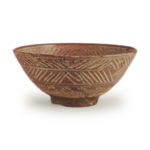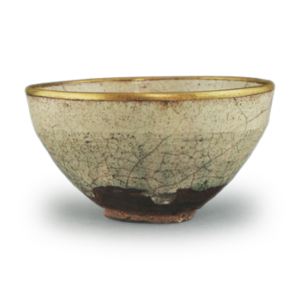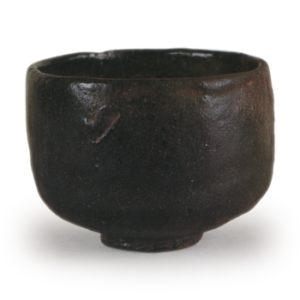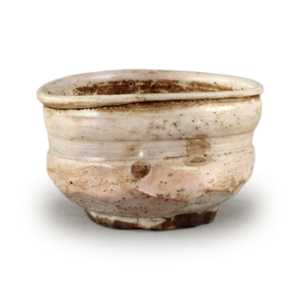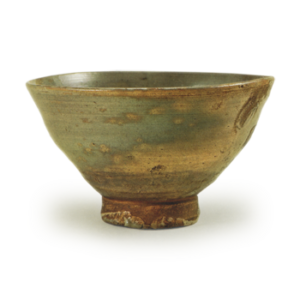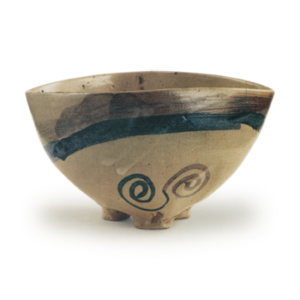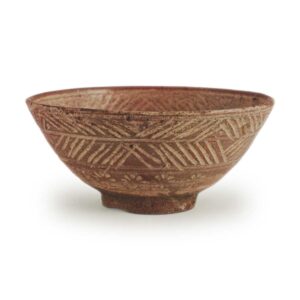
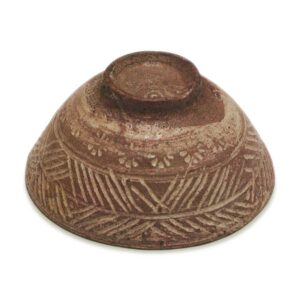
Height: 6.7cm
Mouth diameter: 4.6-14.7cm
Foot diameter: 5.6cm
Height: 1.0cm
Chokumishima is also called “Higakimishima”, and is characterized by the inlay patterns of the inner and outer surfaces of the tea bowl, which resemble the patterns of a Japanese fence. There is also a large chrysanthemum pattern on the inside of the bowl, which is made using a press, and in rare cases, this flower pattern is on the outside. The flower pattern on the outside is especially prized and called “soto hana”, and all of them are high-quality pieces. The most famous examples of the gai-bana style are those that have been handed down in the Mitsui family, the Yaegaki ware from the Yagura family in Kyoto, the Hotei ware from the Takeya family, the Hotaru ware from the Ozu family in Matsusaka, and the Honwan ware from the Hirase family.
The carving style of the Mishima ware is different from the original Mishima ware, and it is more like a shaped tea bowl, so it is also considered to be a type of Gohonte ware. There is also a theory that the kiln was located in Yangsan, Gyeongsangnam-do, but in any case, it is thought that they were made in the early days of the Mamehama Wakan, or in the early Edo period, in the vicinity of Busan. There are also some new and old pieces made in the Busan kiln, but since they were popular with tea masters, there were copies of Japanese pieces made early on, and they are now mixed up together.
This carved Mishima tea bowl has a reddish finish and is carved in a rough style. The hinoki pattern is two-tiered both inside and out, and is thick and carelessly carved like a nail, giving it a deep flavor. The carved ones are slightly thinner and neater, and are considered to be of a lower quality and from a later period. The inside of the bowl is decorated with two rows of flower-shaped patterns, and there is also a single flower-shaped pattern in the tea-drip well. The eight eyes surrounding this pattern are a promise of the outer flower-shaped pattern. The outside of the bowl is decorated with two rows of flower-shaped patterns, and there is also a single flower-shaped pattern in the tea-drip well. The number of flowers is sixteen, and this is also a promise of the outer flower-shaped pattern. The base is made of fine red clay, and the pattern is made by brushing on white paint and then wiping it off, creating a white inlay. The foot ring is made of clay, and the inside is made of a helmet-shaped stand, with creases and wrinkles, and the fingerprints are also a feature.
As you would expect from a piece owned by Roka Hirase, it has a rich, elegant tea-like flavor, and the overall reddish hue is also beautiful, making it one of the most highly regarded of the Horimishima pieces. The accompanying items are
an inner box made of paulownia wood with a “Koshimishima” inscription on the lid
same, paper on the underside of the lid with the inscription “Horimishima Sotohana” by Roka Hirase
paper wrapper by Roka Hirase
This piece was passed down in the Hirase family and is now in the collection of a certain family in Osaka.

